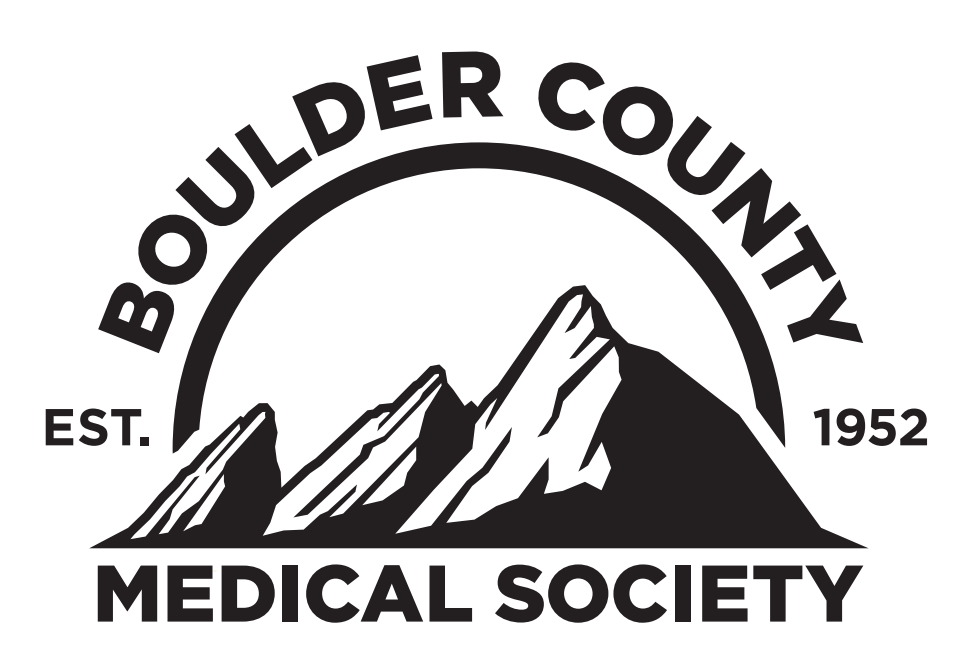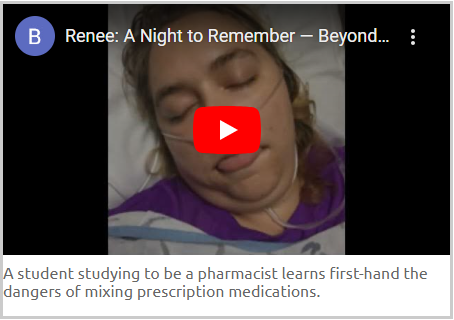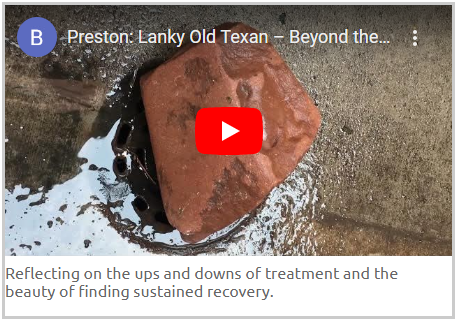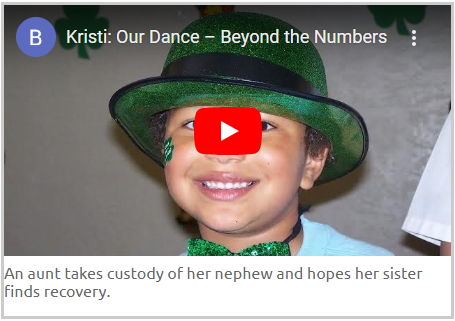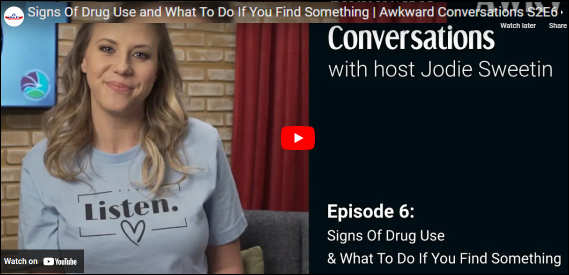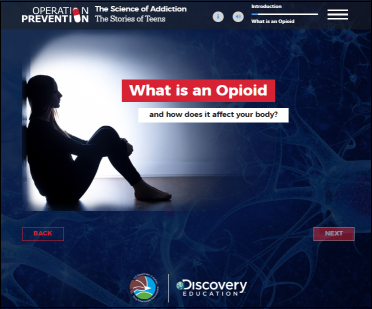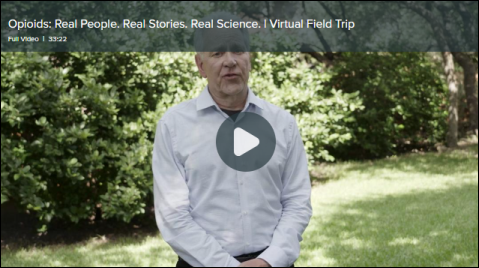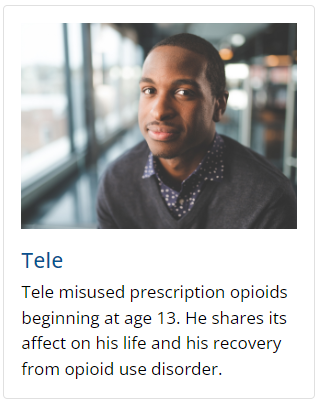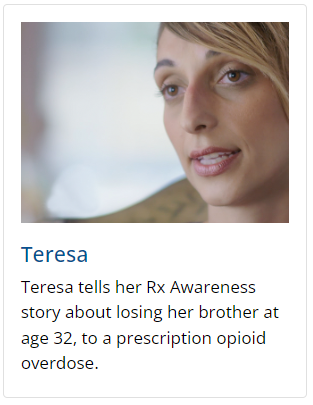
Opioid Epidemic Digital Guide
for Boulder County
DID YOU KNOW?
Opioid use disorder is a treatable medical condition.
1 in 6 people have an “addiction gene” for opioids or a genetic potential for addiction.
Odds are high that you know someone with substance abuse disorder (addiction).
Marijuana, party drugs, and counterfeit medication can be laced with lethal opioids and sedatives.
Illegal drugs often look like real medication or candy.
Children under 5: Opioids were the #1 cause of fatal poisonings last year.
Adults 18-45: Opioids and fentanyl are the #1 cause of death, more than motor vehicle accidents and guns.
Adults 55+: Opioid overdose deaths quadrupled in the last 10 years.
Be educated, be aware, and help save the life of a family member, friend, or community member!
Join us in addressing this public health crisis by visiting the BCMS Opioid Awareness Project.
The Boulder County Medical Society (BCMS) and the BCMS Foundation have organized the following digital resources to address the opioid crisis and fentanyl epidemic in our community. These resources are intended to help educate and empower you to tackle the public health crisis facing us. Your education and involvement can play a CRUCIAL role in stopping this toxic and deadly epidemic.
OPIOID EPIDEMIC DIGITAL GUIDE
If you, a family member, or a friend are experiencing a substance abuse crisis and need immediate assistance, contact the Colorado Crisis Services.
Colorado Crisis Services – Colorado’s statewide resource for mental health, substance use or emotional crisis help, information, and referrals. Colorado Crisis Services provides confidential and immediate support, 24/7/365. If you are in crisis or need help, call 1-844-493-TALK (8255) or text TALK to 38255 to speak to a trained professional. Walk-in centers in Colorado can be found on their website.
OPIOID and FENTANYL AWARENESS
Colorado Consortium for Prescription Drug Abuse Prevention This website offers compelling personal stories and videos from people and family members touched by the opioid crisis and substance use disorder in Colorado. One of the key missions of the CO Consortium is to reduce prescription drug misuse and abuse. They have posted valuable educational resources and toolkits at their RESOURCES section including information for: 1) Affected Families and Friends 2) Treatment options for addiction 3) Safe Disposal and Storage of medications 4) Naloxone and Harm Reduction resources 5) Recovery Friendly Workplace Toolkit for CO employers and 6) Public Awareness strategies and tools for the public to address the epidemic and protect their communities.
This website offers compelling personal stories and videos from people and family members touched by the opioid crisis and substance use disorder in Colorado. One of the key missions of the CO Consortium is to reduce prescription drug misuse and abuse. They have posted valuable educational resources and toolkits at their RESOURCES section including information for: 1) Affected Families and Friends 2) Treatment options for addiction 3) Safe Disposal and Storage of medications 4) Naloxone and Harm Reduction resources 5) Recovery Friendly Workplace Toolkit for CO employers and 6) Public Awareness strategies and tools for the public to address the epidemic and protect their communities.
Centers for Disease Control and Prevention Opioid Basics
 The Centers for Disease Control and Prevention (CDC) has developed a special section of their website dedicated to understanding the basics of the opioid crisis in the US. Topics include: 1) Opioid Basics 2) Understanding the Epidemic 3) Commonly Used Terms 4) Prescription Opioids 5) Review of Heroin and Fentanyl 6) Overdose Prevention 7) Information for Patients 8) Risks and How to Reduce Them and 9) Frequently Asked Questions. Another section includes resources to assist community members help prevent opioid-related overdoses including support for patients, family, and friends and Helpful Materials for Patients.
The Centers for Disease Control and Prevention (CDC) has developed a special section of their website dedicated to understanding the basics of the opioid crisis in the US. Topics include: 1) Opioid Basics 2) Understanding the Epidemic 3) Commonly Used Terms 4) Prescription Opioids 5) Review of Heroin and Fentanyl 6) Overdose Prevention 7) Information for Patients 8) Risks and How to Reduce Them and 9) Frequently Asked Questions. Another section includes resources to assist community members help prevent opioid-related overdoses including support for patients, family, and friends and Helpful Materials for Patients.
Fentanyl Awareness
 The Drug Enforcement Administration (DEA) has dedicated a section of their website that addresses the fentanyl crisis in the US. This website is packed with resources including: 1) Social Media Resources – a “campaign to encourage the use of social media to help raise public awareness of a significant nationwide surge in counterfeit pills that are mass-produced in labs, deceptively marketed as legitimate” and 2) Partner Toolbox – a resource that offers “an opportunity for the media, parents, teachers, educators, and community organizations to raise awareness about counterfeit prescription drugs.” Other resources include: 1) Information for TEENS 2) Information for PARENTS and CAREGIVERS and 3) Information for TEACHERS.
The Drug Enforcement Administration (DEA) has dedicated a section of their website that addresses the fentanyl crisis in the US. This website is packed with resources including: 1) Social Media Resources – a “campaign to encourage the use of social media to help raise public awareness of a significant nationwide surge in counterfeit pills that are mass-produced in labs, deceptively marketed as legitimate” and 2) Partner Toolbox – a resource that offers “an opportunity for the media, parents, teachers, educators, and community organizations to raise awareness about counterfeit prescription drugs.” Other resources include: 1) Information for TEENS 2) Information for PARENTS and CAREGIVERS and 3) Information for TEACHERS.
Counterfeit Pill Awareness  The Drug Enforcement Administration (DEA) has announced that fake prescription pills which appear identical to legitimate prescription pills but may contain LETHAL AMOUNTS OF FENTANYL or methamphetamine are on the rise. The DEA warns that “A significant number of high school and college students purchase Adderall and Xanax from dark web drug markets and/or through social media referrals.” Fake prescription pills are easily accessible on social media and e-commerce platforms for purchase by minors and young adults assuming they are buying authentic oxycodone, Adderall or Xanax. The difference between an authentic medication and a counterfeit drug may be impossible to recognize but may result in fatal fentanyl poisonings.
The Drug Enforcement Administration (DEA) has announced that fake prescription pills which appear identical to legitimate prescription pills but may contain LETHAL AMOUNTS OF FENTANYL or methamphetamine are on the rise. The DEA warns that “A significant number of high school and college students purchase Adderall and Xanax from dark web drug markets and/or through social media referrals.” Fake prescription pills are easily accessible on social media and e-commerce platforms for purchase by minors and young adults assuming they are buying authentic oxycodone, Adderall or Xanax. The difference between an authentic medication and a counterfeit drug may be impossible to recognize but may result in fatal fentanyl poisonings.
Xylazine Awareness  Xylazine (also called “tranq” or “tranq dope”) is a veterinary tranquilizer which is NOT approved for use in humans and can be life-threatening. It is especially dangerous when combined with opioids like fentanyl. The Centers for Disease Control and Prevention (CDC) have developed a valuable resource “What You Should Know About Xylazine” that includes: 1) What is xylazine? 2) How can people who use illegal drugs reduce harms of xylazine and overdose involving opioids and xylazine? 3) How can communities reduce harms of xylazine and opioids/fentanyl mixed with xylazine? and 4) Additional Xylazine Resources. The Drug Enforcement Administration (DEA) has seized xylazine and fentanyl mixtures in 48 of 50 states. The Boulder County Public Health Department (BCPH) also warned that xylazine may be adulterating fentanyl, cocaine, methamphetamine, and other narcotics in Boulder County which increases the risk of fatal overdose.
Xylazine (also called “tranq” or “tranq dope”) is a veterinary tranquilizer which is NOT approved for use in humans and can be life-threatening. It is especially dangerous when combined with opioids like fentanyl. The Centers for Disease Control and Prevention (CDC) have developed a valuable resource “What You Should Know About Xylazine” that includes: 1) What is xylazine? 2) How can people who use illegal drugs reduce harms of xylazine and overdose involving opioids and xylazine? 3) How can communities reduce harms of xylazine and opioids/fentanyl mixed with xylazine? and 4) Additional Xylazine Resources. The Drug Enforcement Administration (DEA) has seized xylazine and fentanyl mixtures in 48 of 50 states. The Boulder County Public Health Department (BCPH) also warned that xylazine may be adulterating fentanyl, cocaine, methamphetamine, and other narcotics in Boulder County which increases the risk of fatal overdose.
Nitazine Awareness  Nitazenes are a class of synthetic opioids that are as potent or stronger than fentanyl and have increasingly been involved in deaths in the US as well as internationally. Substances like Nitazenes have also been introduced to Boulder County and pose serious challenges for public health officials and law enforcement officers according to the Office of the Boulder County Coroner. The Alcohol and Drug Foundation (ADF) based in Australia has developed a summary of nitrazene and its effects including: 1) What are nitazenes? 2 Effects of nitazenes 3) Signs of overdose 4) Long-term effects and 5) Mixing nitazenes and other drugs. Medpage Today has also developed resources including: Nitazenes Have Entered the Drug Scene. Now What? and What to Know About Nitazenes, a Class of Potent Synthetic Opioids.
Nitazenes are a class of synthetic opioids that are as potent or stronger than fentanyl and have increasingly been involved in deaths in the US as well as internationally. Substances like Nitazenes have also been introduced to Boulder County and pose serious challenges for public health officials and law enforcement officers according to the Office of the Boulder County Coroner. The Alcohol and Drug Foundation (ADF) based in Australia has developed a summary of nitrazene and its effects including: 1) What are nitazenes? 2 Effects of nitazenes 3) Signs of overdose 4) Long-term effects and 5) Mixing nitazenes and other drugs. Medpage Today has also developed resources including: Nitazenes Have Entered the Drug Scene. Now What? and What to Know About Nitazenes, a Class of Potent Synthetic Opioids.
Opioid Facts  The US Department of Justice has developed several resources intended to increase the awareness of Americans about how opioids may enter their communities and affect their families through diverted prescription drugs (particularly from family medicine cabinets), theft and robbery of local pharmacies, and through fraudulent prescriptions. There is also a discussion of how opioids can be purchased via the Internet, social media sites such as Facebook, Google, and Craigslist, and a multitude of sites on the Dark Web. Other sections include: What is Being Done to Curb this Epidemic? and What Can You Do? There is a link to a valuable DEA resource “What Every Parent and Caregiver Needs to Know About Fake Pills.”
The US Department of Justice has developed several resources intended to increase the awareness of Americans about how opioids may enter their communities and affect their families through diverted prescription drugs (particularly from family medicine cabinets), theft and robbery of local pharmacies, and through fraudulent prescriptions. There is also a discussion of how opioids can be purchased via the Internet, social media sites such as Facebook, Google, and Craigslist, and a multitude of sites on the Dark Web. Other sections include: What is Being Done to Curb this Epidemic? and What Can You Do? There is a link to a valuable DEA resource “What Every Parent and Caregiver Needs to Know About Fake Pills.”
GetSmartAboutDrugs: Be Informed. Search for information about a drug.  The Drug Enforcement Administration (DEA) has posted a very valuable resource for parents, educators, and caregivers to educate them so that they can recognize the drug or drug paraphernalia that a family member or friend may be using covertly. The DEA has created a photo gallery of drugs commonly abused by name as well as photos of associated drug paraphernalia. There is also search capacity allowing the user to search the photo gallery by name of the drug or drug type. When each drug is selected, the following information is presented: 1) What is it? 2) Street Names 3) How is it used? 4) Paraphernalia 5) How does it affect the body? and 7) Drug Summary Fact Sheet. There are additional links to Drug Paraphernalia Q&A and How to Identify Drug Paraphernalia and where teens Hide Drugs.
The Drug Enforcement Administration (DEA) has posted a very valuable resource for parents, educators, and caregivers to educate them so that they can recognize the drug or drug paraphernalia that a family member or friend may be using covertly. The DEA has created a photo gallery of drugs commonly abused by name as well as photos of associated drug paraphernalia. There is also search capacity allowing the user to search the photo gallery by name of the drug or drug type. When each drug is selected, the following information is presented: 1) What is it? 2) Street Names 3) How is it used? 4) Paraphernalia 5) How does it affect the body? and 7) Drug Summary Fact Sheet. There are additional links to Drug Paraphernalia Q&A and How to Identify Drug Paraphernalia and where teens Hide Drugs.
Emoji Drug Code Decoded This Drug Enforcement Administration (DEA) reference guide “is intended to give parents, caregivers, educators, and other influencers a better sense of how emojis are being used in conjunction with illegal drugs. Fake prescription pills, commonly laced with deadly fentanyl and methamphetamine, are often sold on social media and e-commerce platforms –making them available to anyone with a smartphone.” The guide lists common Emoji codes used for sale of Oxycodone and Percocet, Xanax, Adderall, and other illegal drugs.
This Drug Enforcement Administration (DEA) reference guide “is intended to give parents, caregivers, educators, and other influencers a better sense of how emojis are being used in conjunction with illegal drugs. Fake prescription pills, commonly laced with deadly fentanyl and methamphetamine, are often sold on social media and e-commerce platforms –making them available to anyone with a smartphone.” The guide lists common Emoji codes used for sale of Oxycodone and Percocet, Xanax, Adderall, and other illegal drugs.
Safe Opioid Use from MedlinePlus MedlinePlus has developed several easy-to-understand health summaries describing major aspects of opioid use including the SAFE USE OF OPIOIDS: 1) What are opioids? 2) How do I know if I need to take opioid medicines? 3) What do I need to know if I am going to take opioid medicines? 4) How can I take my opioid medicine safely? And, 5) How can I safely store and dispose opioid medicines? This health information is based upon guidance from the National Institutes of Health and the National Library of Medicine. MedlinePlus has also developed many other useful health summaries on: 1) Pain Relievers 2) Chronic Pain 3) Prescription Drug Misuse 4) Opioids and Opioid Use Disorder (OUD) 5) Opioid Use Disorder (OUD) Treatment and 6) Opioid Overdose.
MedlinePlus has developed several easy-to-understand health summaries describing major aspects of opioid use including the SAFE USE OF OPIOIDS: 1) What are opioids? 2) How do I know if I need to take opioid medicines? 3) What do I need to know if I am going to take opioid medicines? 4) How can I take my opioid medicine safely? And, 5) How can I safely store and dispose opioid medicines? This health information is based upon guidance from the National Institutes of Health and the National Library of Medicine. MedlinePlus has also developed many other useful health summaries on: 1) Pain Relievers 2) Chronic Pain 3) Prescription Drug Misuse 4) Opioids and Opioid Use Disorder (OUD) 5) Opioid Use Disorder (OUD) Treatment and 6) Opioid Overdose.
NALOXONE USE and AVAILABILITY
OpiRescue App  OpiRescue is a free overdose support tool that compliments Naloxone use and is available for Android, iPhone, and on the web that has been developed by the Colorado Consortium for Prescription Drug Abuse Prevention and the CO Office of Behavioral Health. Information available through OpiRescue includes: 1) how to recognize an overdose 2) step-by-step guidance to help reverse an opioid overdose 3) availability and location of where to find the overdose reversal drug, Naloxone 4) search tool for addiction treatment in CO by location, expertise, and insurance and 5) support resources for opioid users and their family and friends. It is a perfect resource to share with family, friends and colleagues and should be part of every mobile device.
OpiRescue is a free overdose support tool that compliments Naloxone use and is available for Android, iPhone, and on the web that has been developed by the Colorado Consortium for Prescription Drug Abuse Prevention and the CO Office of Behavioral Health. Information available through OpiRescue includes: 1) how to recognize an overdose 2) step-by-step guidance to help reverse an opioid overdose 3) availability and location of where to find the overdose reversal drug, Naloxone 4) search tool for addiction treatment in CO by location, expertise, and insurance and 5) support resources for opioid users and their family and friends. It is a perfect resource to share with family, friends and colleagues and should be part of every mobile device.
How Naloxone Saves Lives in Opioid Overdose  MedlinePlus has developed a short video with a transcript that describes how Naloxone works and includes information on: 1) What is an opioid? 2) Naloxone introduction 3) Signs of opioid overdose 4) How is naloxone given? 5) How does naloxone work? 6) How do opioids affect the body? 7) Opioid withdrawal symptoms 8) Tolerance and 9) How opioid overdose can lead to death. This health information is based upon guidance from the National Institutes of Health and the National Library of Medicine. Additional resources at this website include information on Opioid Overdose, Opioid Use Disorder (OUD) Treatment, Opioids and Opioid Use Disorder (OUD), and Safe Opioid Use.
MedlinePlus has developed a short video with a transcript that describes how Naloxone works and includes information on: 1) What is an opioid? 2) Naloxone introduction 3) Signs of opioid overdose 4) How is naloxone given? 5) How does naloxone work? 6) How do opioids affect the body? 7) Opioid withdrawal symptoms 8) Tolerance and 9) How opioid overdose can lead to death. This health information is based upon guidance from the National Institutes of Health and the National Library of Medicine. Additional resources at this website include information on Opioid Overdose, Opioid Use Disorder (OUD) Treatment, Opioids and Opioid Use Disorder (OUD), and Safe Opioid Use.
You-CAN Save Lives and Mental Health Partners  In response to the opioid and fentanyl crisis in our community, Mental Health Partners has developed the You-CAN campaign and has established a network of FREE naloxone nasal spray kits and fentanyl test strips available across Boulder and Broomfield counties. There is an easy to follow “How to Administer NARCAN/Naloxone” video on the webpage as well as opioid overdose statistics specific to Boulder and national epidemic trends.
In response to the opioid and fentanyl crisis in our community, Mental Health Partners has developed the You-CAN campaign and has established a network of FREE naloxone nasal spray kits and fentanyl test strips available across Boulder and Broomfield counties. There is an easy to follow “How to Administer NARCAN/Naloxone” video on the webpage as well as opioid overdose statistics specific to Boulder and national epidemic trends.
Naloxone Drug Facts  The National Institute on Drug Abuse has created a Naloxone Drug Facts summary that includes discussion of: 1) What is naloxone? 2) How is naloxone given? 3) What are the different naloxone delivery systems? 4) Can I give naloxone to someone who has overdosed? and 5) What precautions are needed when giving naloxone? This webpage also includes information on the signs of an opioid overdose, tolerance versus dependance versus addiction, xylazine, benzodiazepines and opioids, medications to treat opioid use disorder, and co-prescribing Naloxone with prescription opioids.
The National Institute on Drug Abuse has created a Naloxone Drug Facts summary that includes discussion of: 1) What is naloxone? 2) How is naloxone given? 3) What are the different naloxone delivery systems? 4) Can I give naloxone to someone who has overdosed? and 5) What precautions are needed when giving naloxone? This webpage also includes information on the signs of an opioid overdose, tolerance versus dependance versus addiction, xylazine, benzodiazepines and opioids, medications to treat opioid use disorder, and co-prescribing Naloxone with prescription opioids.
The Naloxone Project The Naloxone Project launched a Colorado chapter in 2021 with the mission “to create a medical system and society that has no stigma, provides naloxone, and saves lives. One that is equitable and sustainable.” Their goal is “for all hospitals, labor and delivery units and emergency departments to distribute naloxone to at-risk patients, placing naloxone in patients’ hands prior to their departure from the hospital.” The organization has posted several valuable resources including links to 1) MOMs (Maternal Overdose Matters) Initiative 2) How-to videos for using Naloxone in both English and Spanish and 3) NALOXONE FACTS.
The Naloxone Project launched a Colorado chapter in 2021 with the mission “to create a medical system and society that has no stigma, provides naloxone, and saves lives. One that is equitable and sustainable.” Their goal is “for all hospitals, labor and delivery units and emergency departments to distribute naloxone to at-risk patients, placing naloxone in patients’ hands prior to their departure from the hospital.” The organization has posted several valuable resources including links to 1) MOMs (Maternal Overdose Matters) Initiative 2) How-to videos for using Naloxone in both English and Spanish and 3) NALOXONE FACTS.
University of Colorado Boulder Health and Wellness Services Naloxone Page The University of Colorado Boulder Health and Wellness Services has developed a dedicated webpage addressing the proper use and availability of Naloxone for campus students including: 1) What is naloxone? 2) Who should carry naloxone? 3) When should you use naloxone? 4) How is naloxone administered? 5) How can you get naloxone? The webpage includes a video “Learn how to administer naloxone” as well as links to other valuable resource and support services.
The University of Colorado Boulder Health and Wellness Services has developed a dedicated webpage addressing the proper use and availability of Naloxone for campus students including: 1) What is naloxone? 2) Who should carry naloxone? 3) When should you use naloxone? 4) How is naloxone administered? 5) How can you get naloxone? The webpage includes a video “Learn how to administer naloxone” as well as links to other valuable resource and support services.
TREATMENT OPTIONS and RECOVERY
PILLAR Program The Boulder Community Health PILLAR Program provides FREE assistance to Boulder County residents and was established to address the opioid epidemic by supporting the management of opioid use disorder (OUD) and chronic pain with alternative pain management. This program offers navigation to treatments including short-term case management services and referrals to community agencies for those seeking treatment in an outpatient setting or those requiring higher levels of care. The PILLAR program’s mission is Prevention and Intervention for Life Long Alternatives and Recovery.
The Boulder Community Health PILLAR Program provides FREE assistance to Boulder County residents and was established to address the opioid epidemic by supporting the management of opioid use disorder (OUD) and chronic pain with alternative pain management. This program offers navigation to treatments including short-term case management services and referrals to community agencies for those seeking treatment in an outpatient setting or those requiring higher levels of care. The PILLAR program’s mission is Prevention and Intervention for Life Long Alternatives and Recovery.
SAMHSA Treatment Locator The Substance Abuse and Mental Health Services Administration (SAMHSA) has developed a treatment locator, FindTreatment.gov which is a confidential and anonymous resource for people seeking treatment for mental and substance use disorders. The locator is designed to find a treatment facility based upon a search by address, city, zip code or facility name. The website also provides information about: 1) TREATMENT OPTIONS - reviews quality treatment, different types of treatment, and what to expect when starting treatment; 2) PAYING FOR TREATMENT – reviews cost of treatment and payment options; 3) UNDERSTANDING ADDICTION – reviews addiction as a chronic disease changing the brain and altering decision-making; and, 4) OTHER TREATMENT RESOURCES – reviews practitioners and treatment programs providing buprenorphine for opioid addiction and programs providing methadone for the treatment of opioid addiction.
The Substance Abuse and Mental Health Services Administration (SAMHSA) has developed a treatment locator, FindTreatment.gov which is a confidential and anonymous resource for people seeking treatment for mental and substance use disorders. The locator is designed to find a treatment facility based upon a search by address, city, zip code or facility name. The website also provides information about: 1) TREATMENT OPTIONS - reviews quality treatment, different types of treatment, and what to expect when starting treatment; 2) PAYING FOR TREATMENT – reviews cost of treatment and payment options; 3) UNDERSTANDING ADDICTION – reviews addiction as a chronic disease changing the brain and altering decision-making; and, 4) OTHER TREATMENT RESOURCES – reviews practitioners and treatment programs providing buprenorphine for opioid addiction and programs providing methadone for the treatment of opioid addiction.
OwnPath and CO Wellness Recovery The Colorado Behavioral Health Administration and Colorado Office of Behavioral Health have many free resources to assist CO residents who need help finding care for addiction disorders. OwnPath offers Colorado mental health and substance use treatment providers that are licensed by the Behavioral Health Administration by zip code. The CO Wellness Recovery website offers a Mental Wellness and Addiction Recovery Guide - a free resource for Coloradans considering recovery. There are also specific resources for caregivers.
The Colorado Behavioral Health Administration and Colorado Office of Behavioral Health have many free resources to assist CO residents who need help finding care for addiction disorders. OwnPath offers Colorado mental health and substance use treatment providers that are licensed by the Behavioral Health Administration by zip code. The CO Wellness Recovery website offers a Mental Wellness and Addiction Recovery Guide - a free resource for Coloradans considering recovery. There are also specific resources for caregivers.
LADDERS This website is supported by the Colorado Department of Human Services, Office of Behavioral Health and offers a referral resource for information and services for prevention, treatment, and recovery from substance use and mental health conditions in Colorado. The website contains a search feature, Find A Service Provider with the capacity to search by name, city or zip code. There is also a link to the Colorado Behavioral Health Administration website for additional information and resources.
This website is supported by the Colorado Department of Human Services, Office of Behavioral Health and offers a referral resource for information and services for prevention, treatment, and recovery from substance use and mental health conditions in Colorado. The website contains a search feature, Find A Service Provider with the capacity to search by name, city or zip code. There is also a link to the Colorado Behavioral Health Administration website for additional information and resources.
Drug Enforcement Administration Recovery Resources The Drug Enforcement Administration (DEA) has a dedicated section of their website that posts a long list of resources that address the opioid and fentanyl crisis from screening to treatment to recovery. There are multiple facts sheets and information summaries that are included in each drop-down section based upon the following categories: 1) Know the Signs of Addiction 2) How to Find Help 3) Treatment 4) Recovery and 5) Prevention & Resources.
The Drug Enforcement Administration (DEA) has a dedicated section of their website that posts a long list of resources that address the opioid and fentanyl crisis from screening to treatment to recovery. There are multiple facts sheets and information summaries that are included in each drop-down section based upon the following categories: 1) Know the Signs of Addiction 2) How to Find Help 3) Treatment 4) Recovery and 5) Prevention & Resources.
SAFE STORAGE AND DISPOSAL OF PAIN MEDICATIONS
Colorado Household Medication and Sharps Takeback program The CO Department of Public Health and Environment has developed an interactive map listing take-back locations that participate in the state program for disposal of pain medications for the public. The Colorado Consortium for Prescription Drug Abuse Prevention program is also listed here. The TakeMedsSeriously program “accepts and destroys unused and expired over-the-counter and prescription medications generated by households. All locations accept prescribed controlled substances (i.e., Percocet, Vicodin, Xanax, Ritalin and Adderall).”
The CO Department of Public Health and Environment has developed an interactive map listing take-back locations that participate in the state program for disposal of pain medications for the public. The Colorado Consortium for Prescription Drug Abuse Prevention program is also listed here. The TakeMedsSeriously program “accepts and destroys unused and expired over-the-counter and prescription medications generated by households. All locations accept prescribed controlled substances (i.e., Percocet, Vicodin, Xanax, Ritalin and Adderall).”
Safe Use, Storage, and Disposal of Opioid Drugs The American Academy of Family Physicians has posted information on the safe storage and disposal of opioid medication including: 1) How do I safely store opioids? 2) How do I safely dispose of opioids? and 3) What if my community doesn’t allow flushing unused pills? The site also includes information from the American Academy of Family Physicians on Treating an opioid addiction and Questions to ask your doctor.
The American Academy of Family Physicians has posted information on the safe storage and disposal of opioid medication including: 1) How do I safely store opioids? 2) How do I safely dispose of opioids? and 3) What if my community doesn’t allow flushing unused pills? The site also includes information from the American Academy of Family Physicians on Treating an opioid addiction and Questions to ask your doctor.
RESOURCES FOR FAMILIES, ADOLESCENTS, TEENS and EDUCATORS
Drugs & Your Family GetSmartAboutDrugs is a resource developed by the Drug Enforcement Administration (DEA) for parents, educators, and caregivers to educate them about warning signs of drug misuse and abuse and early signs of addiction as well as many prevention strategies. The website posts a compelling list of videos and fact sheets addressing what parents and educators can use to address and PREVENT opioid abuse including: 1) Accidental Exposure: Drugs and Young Children 2) Should Your Teen Take that Opioid Prescription? 3) Buying Drugs Online – What You Should Know & How to Protect Your Kids 4) Does Your Family Know the Risks of Misusing Opioids? 5) Raising Drug-Free Young People 6) Fake Pills: What You Need to Know 7) How to Encourage Your Child to Get Help for Their Substance Use or Addiction 8) What Are the Signs of Having a Problem with Drugs? 9) What Should You Do with Your Unused Meds? and 10) Preventing Opioid Misuse among High School Student-Athletes: A Playbook for Parents, Caregivers, and Educators.
GetSmartAboutDrugs is a resource developed by the Drug Enforcement Administration (DEA) for parents, educators, and caregivers to educate them about warning signs of drug misuse and abuse and early signs of addiction as well as many prevention strategies. The website posts a compelling list of videos and fact sheets addressing what parents and educators can use to address and PREVENT opioid abuse including: 1) Accidental Exposure: Drugs and Young Children 2) Should Your Teen Take that Opioid Prescription? 3) Buying Drugs Online – What You Should Know & How to Protect Your Kids 4) Does Your Family Know the Risks of Misusing Opioids? 5) Raising Drug-Free Young People 6) Fake Pills: What You Need to Know 7) How to Encourage Your Child to Get Help for Their Substance Use or Addiction 8) What Are the Signs of Having a Problem with Drugs? 9) What Should You Do with Your Unused Meds? and 10) Preventing Opioid Misuse among High School Student-Athletes: A Playbook for Parents, Caregivers, and Educators.
Community Substance Abuse Prevention (CSAP) Program The CSAP Program’s mission is to reduce and prevent substance abuse in Boulder County through community-level education, advocacy, and policy. Their website highlights programs especially for adolescents and young adults such as the Healthy Futures Coalition and the Substance Abuse and Athletic Performance program which offers a training module designed specifically for coaches to understand the impacts of substance use and how to support young athletes potentially facing substance abuse and addiction.
The CSAP Program’s mission is to reduce and prevent substance abuse in Boulder County through community-level education, advocacy, and policy. Their website highlights programs especially for adolescents and young adults such as the Healthy Futures Coalition and the Substance Abuse and Athletic Performance program which offers a training module designed specifically for coaches to understand the impacts of substance use and how to support young athletes potentially facing substance abuse and addiction.
The Works Program Boulder County has a dedicated webpage describing The Works Program which is “a free, legal, and anonymous harm reduction program for people who use drugs and their friends and family in Boulder County.” The Works Program provides support to clients by connecting them to a variety of community resources such as substance abuse disorder services. The website also provides Overdose Prevention & Response section with resources and videos including information on: 1) Preventing an Overdose 2) Recognizing an Overdose 3) Factors that Increase the Risk of an Overdose 4) Responding to an Overdose and 5) What NOT to do.
Boulder County has a dedicated webpage describing The Works Program which is “a free, legal, and anonymous harm reduction program for people who use drugs and their friends and family in Boulder County.” The Works Program provides support to clients by connecting them to a variety of community resources such as substance abuse disorder services. The website also provides Overdose Prevention & Response section with resources and videos including information on: 1) Preventing an Overdose 2) Recognizing an Overdose 3) Factors that Increase the Risk of an Overdose 4) Responding to an Overdose and 5) What NOT to do.
Operation Prevention The Drug Enforcement Administration (DEA) has partnered with Discovery Education to provide no-cost online tools that educate every age group and member of the community “with the power of prevention.” The website provides resources for students in grades 3-12, plus additional resources designed for educators, families, and professionals. Resources include sections: 1) Opioids and Prescription Drugs – strategies for equipping students (grades 3-12) with both knowledge and refusal skills to make smart decisions when confronted; 2) Parent Toolkit - information on the warning signs of prescription opioid misuse and a guide to prevention and intervention for family members; 3) Multi-Drug Exploratory - comprehensive 6-part video series on substance abuse for students in grades 3-8; and, 4) Workplace Resources – information and strategies to deal with opioid misuse in the workplace.
The Drug Enforcement Administration (DEA) has partnered with Discovery Education to provide no-cost online tools that educate every age group and member of the community “with the power of prevention.” The website provides resources for students in grades 3-12, plus additional resources designed for educators, families, and professionals. Resources include sections: 1) Opioids and Prescription Drugs – strategies for equipping students (grades 3-12) with both knowledge and refusal skills to make smart decisions when confronted; 2) Parent Toolkit - information on the warning signs of prescription opioid misuse and a guide to prevention and intervention for family members; 3) Multi-Drug Exploratory - comprehensive 6-part video series on substance abuse for students in grades 3-8; and, 4) Workplace Resources – information and strategies to deal with opioid misuse in the workplace.
Parent Toolkit The Drug Enforcement Administration (DEA) has partnered with Discovery Education to develop a comprehensive Parent Toolkit that can be used by parents, educators, and other family members – “anybody who interacts with youth.” The premise of the guide is the fact that parents and caregivers can have “a pivotal influence on youth’s experimentation and use of substances.” The guide provides many resources including parenting styles and skills specific to opioid misuse prevention and REFUSAL SKILLS for adolescents and teens to help arm them so that they can effectively avoid participating in high-risk behaviors involving drug experimentation and use.
The Drug Enforcement Administration (DEA) has partnered with Discovery Education to develop a comprehensive Parent Toolkit that can be used by parents, educators, and other family members – “anybody who interacts with youth.” The premise of the guide is the fact that parents and caregivers can have “a pivotal influence on youth’s experimentation and use of substances.” The guide provides many resources including parenting styles and skills specific to opioid misuse prevention and REFUSAL SKILLS for adolescents and teens to help arm them so that they can effectively avoid participating in high-risk behaviors involving drug experimentation and use.
The Science of Addiction – The Stories of Teens The Drug Enforcement Administration (DEA) and Discovery Education have created a self-paced, standards-aligned e-learning module that highlight teenagers struggling with prescription opioid misuse and heroin use by exploring common misconceptions about opioids through the voices of teens. There is an accompanying EDUCATOR GUIDE to assist with this exercise. Key learning objectives for teenagers completing the module include: 1) taking an opioid can impact several systems of the human body 2) opioid misuse can easily and quickly lead to physical dependence 3) anyone can become addicted to opioids 4) prescription opioids can be just as dangerous as street drugs such as heroin and 5) short-term and long-term effects of misusing opioids can be warning signs of physical dependency and withdrawal.
The Drug Enforcement Administration (DEA) and Discovery Education have created a self-paced, standards-aligned e-learning module that highlight teenagers struggling with prescription opioid misuse and heroin use by exploring common misconceptions about opioids through the voices of teens. There is an accompanying EDUCATOR GUIDE to assist with this exercise. Key learning objectives for teenagers completing the module include: 1) taking an opioid can impact several systems of the human body 2) opioid misuse can easily and quickly lead to physical dependence 3) anyone can become addicted to opioids 4) prescription opioids can be just as dangerous as street drugs such as heroin and 5) short-term and long-term effects of misusing opioids can be warning signs of physical dependency and withdrawal.
Drug Enforcement Administration (DEA) Publications The Drug Enforcement Administration (DEA) has developed a comprehensive list of helpful information posted at the DEA Publications section of their website with many resources available in both English and Spanish for parents and educators. The website includes several Drug Fact Cards and Sheets as well as: 1) Growing Up Drug Free: A Parent's Guide to Substance Use Prevention 2) What Every Parent and Caregiver Should Know About Fake Pills 3) Prevention with Purpose: A Strategic Planning Guide for Preventing Drug Misuse Among College Students 4) Student Athletes and Opioids (Poster) 5) How to Properly Dispose of Your Unused Medicines and 6) Prescription for Disaster: How Teens Misuse Medicine.
The Drug Enforcement Administration (DEA) has developed a comprehensive list of helpful information posted at the DEA Publications section of their website with many resources available in both English and Spanish for parents and educators. The website includes several Drug Fact Cards and Sheets as well as: 1) Growing Up Drug Free: A Parent's Guide to Substance Use Prevention 2) What Every Parent and Caregiver Should Know About Fake Pills 3) Prevention with Purpose: A Strategic Planning Guide for Preventing Drug Misuse Among College Students 4) Student Athletes and Opioids (Poster) 5) How to Properly Dispose of Your Unused Medicines and 6) Prescription for Disaster: How Teens Misuse Medicine.
RESOURCES FOR COLLEGE AGE AND YOUNG ADULTS
KeepThePartySafe.org The Colorado Consortium for Prescription Drug Abuse Prevention has developed a resource for safety during party activities to help prevent fentanyl poisonings and drug overdoses by educating party goers ahead of time and empowering them with knowledge. Useful information at the website includes: 1) details about Fentanyl contamination in all types of recreational drugs across Colorado 2) checklist of what to bring before a party 3) recommendations for bringing your own naloxone and test strips 4) signs of an overdose and how to recognize it 5) directions for use of Naloxone and 6) designation of a non user.
The Colorado Consortium for Prescription Drug Abuse Prevention has developed a resource for safety during party activities to help prevent fentanyl poisonings and drug overdoses by educating party goers ahead of time and empowering them with knowledge. Useful information at the website includes: 1) details about Fentanyl contamination in all types of recreational drugs across Colorado 2) checklist of what to bring before a party 3) recommendations for bringing your own naloxone and test strips 4) signs of an overdose and how to recognize it 5) directions for use of Naloxone and 6) designation of a non user.
Campus Drug Prevention The Drug Enforcement Administration (DEA) has developed a special website specifically for Campus Drug Prevention. The website displays a DRUG INDEX which is a “one-stop reference for everything related to drugs -- from their appearance, paraphernalia, effects on the body, and more” for use by college age students. The website also has a dedicated section THE STUDENT CENTER posting information “about drug use and misuse among college students, ways you can help a friend that is struggling with drug misuse or addiction, prevention resources.” There is also a PEER EDUCATION PORTAL which can be used as a resource for fellow students to educate others about health and safety matters surrounding drug use and HOW TO HELP A FRIEND providing approaches to talk with a friend showing signs of drug misuse and abuse. The site also includes publications and drug fact cards for college students.
The Drug Enforcement Administration (DEA) has developed a special website specifically for Campus Drug Prevention. The website displays a DRUG INDEX which is a “one-stop reference for everything related to drugs -- from their appearance, paraphernalia, effects on the body, and more” for use by college age students. The website also has a dedicated section THE STUDENT CENTER posting information “about drug use and misuse among college students, ways you can help a friend that is struggling with drug misuse or addiction, prevention resources.” There is also a PEER EDUCATION PORTAL which can be used as a resource for fellow students to educate others about health and safety matters surrounding drug use and HOW TO HELP A FRIEND providing approaches to talk with a friend showing signs of drug misuse and abuse. The site also includes publications and drug fact cards for college students.
University of Colorado Boulder Health and Wellness Services Fentanyl Page The University of Colorado Boulder Health and Wellness Services has developed a dedicated webpage addressing the fentanyl crisis in Boulder County including 5 things everyone should know about fentanyl for campus students: 1) What is fentanyl? 2) Why is fentanyl dangerous? 3) How common is fentanyl in Colorado? 4) Tips for staying safe and 5) Naloxone and how to use it including an instructional video. The site posts IMPORTANT POLICIES TO KNOW including the CU Boulder Amnesty Policy and the CO 911 Good Samaritan Law regarding emergency drug or alcohol overdose assistance. Additional information includes Avoid using substances alone, Start small and go slow, Test for fentanyl, and Sobriety can reduce tolerance. Additional related Campus resources are also posted.
The University of Colorado Boulder Health and Wellness Services has developed a dedicated webpage addressing the fentanyl crisis in Boulder County including 5 things everyone should know about fentanyl for campus students: 1) What is fentanyl? 2) Why is fentanyl dangerous? 3) How common is fentanyl in Colorado? 4) Tips for staying safe and 5) Naloxone and how to use it including an instructional video. The site posts IMPORTANT POLICIES TO KNOW including the CU Boulder Amnesty Policy and the CO 911 Good Samaritan Law regarding emergency drug or alcohol overdose assistance. Additional information includes Avoid using substances alone, Start small and go slow, Test for fentanyl, and Sobriety can reduce tolerance. Additional related Campus resources are also posted.
RESOURCES FOR PREGNANT WOMEN
MOMs (Maternal Overdose Matters) Initiative The Naloxone Project launched a Colorado chapter in 2021 with a commitment to improve the health and wellbeing of those affected by opioid use disorder. The Project also launched the Maternal Overdose Matters (MOMS) Initiative with the mission “to help all hospital-based labor and delivery and perinatal units place naloxone — a lifesaving medication — in the hands of at-risk patients and their families prior to departure from the hospital.” This website provides free access to Take-Home Naloxone Implementation Toolkit: Pregnant and Postpartum Patients and Families and other useful resources.
The Naloxone Project launched a Colorado chapter in 2021 with a commitment to improve the health and wellbeing of those affected by opioid use disorder. The Project also launched the Maternal Overdose Matters (MOMS) Initiative with the mission “to help all hospital-based labor and delivery and perinatal units place naloxone — a lifesaving medication — in the hands of at-risk patients and their families prior to departure from the hospital.” This website provides free access to Take-Home Naloxone Implementation Toolkit: Pregnant and Postpartum Patients and Families and other useful resources.
Using Painkillers When Pregnant American Addiction Centers (AAC) has developed a summary of the use of painkillers during pregnancy. The summary includes information addressing: 1) How Do Opioids Work? 2) Prescription Painkiller Use During Pregnancy 3) What Are the Potential Effects of Opioids on a Fetus? 4) Neonatal Abstinence Syndrome (NAS) 5) Treating NAS 6) Is it Safe to Take Prescription Opioids During Pregnancy? 7) Quitting Painkillers While Pregnant and 8) Treatment for Opioid Addiction. Additional articles related to prescription opioid addiction are also included at this website.
American Addiction Centers (AAC) has developed a summary of the use of painkillers during pregnancy. The summary includes information addressing: 1) How Do Opioids Work? 2) Prescription Painkiller Use During Pregnancy 3) What Are the Potential Effects of Opioids on a Fetus? 4) Neonatal Abstinence Syndrome (NAS) 5) Treating NAS 6) Is it Safe to Take Prescription Opioids During Pregnancy? 7) Quitting Painkillers While Pregnant and 8) Treatment for Opioid Addiction. Additional articles related to prescription opioid addiction are also included at this website.
RESOURCES FOR GRANDPARENTS AND SENIORS
What Seniors Should Know About Opioids The Colorado Consortium for Prescription Drug Abuse Prevention has developed a dedicated webpage for seniors and grandparents that use prescription pain medicine such as opioids. The webpage provides information and videos addressing: 1) How to safely use opioids and all other medication; 2) How to safely store medication; and, 3) How to properly dispose of medication. The site also includes a direct link to information about how to dispose of medication, where to find a takeback site, what medications need special arrangements at their safe medication disposal page.
The Colorado Consortium for Prescription Drug Abuse Prevention has developed a dedicated webpage for seniors and grandparents that use prescription pain medicine such as opioids. The webpage provides information and videos addressing: 1) How to safely use opioids and all other medication; 2) How to safely store medication; and, 3) How to properly dispose of medication. The site also includes a direct link to information about how to dispose of medication, where to find a takeback site, what medications need special arrangements at their safe medication disposal page.
RESOURCES FOR COMMUNITY OUTREACH
Empowering Communities with Prevention Drug Enforcement Administration (DEA) and Discovery Education have developed an educational initiative, Operation Prevention to provide COMMUNITIES with proactive digital tools to raise knowledge and awareness about the dangers of substance misuse in their local communities. This public health initiative has been designed to empower adults, young adults, and children with the knowledge and refusal skills they need to succeed in preventing substance misuse in schools, workplaces, and communities. Operation Prevention is an award-winning educational program with resources available in both English and Spanish and includes a free, standards-aligned program for young people ages 8–18.
Drug Enforcement Administration (DEA) and Discovery Education have developed an educational initiative, Operation Prevention to provide COMMUNITIES with proactive digital tools to raise knowledge and awareness about the dangers of substance misuse in their local communities. This public health initiative has been designed to empower adults, young adults, and children with the knowledge and refusal skills they need to succeed in preventing substance misuse in schools, workplaces, and communities. Operation Prevention is an award-winning educational program with resources available in both English and Spanish and includes a free, standards-aligned program for young people ages 8–18.
Substance Use Advisory Group (SUAG) The Boulder County Substance Use Advisory Group (SUAG) is a “group of individuals and organizations dedicated to responding to the opioid epidemic and other substance abuse.” The Boulder County based group is committed to advancing a “comprehensive response to opioid and other drug use and the harmful impacts on the community by prioritizing and removing barriers to proven prevention, treatment, and harm reduction strategies, mobilizing existing resources, and encouraging informed and healthy community attitudes.” The website posts related links addressing: 1) Boulder County Opioid Data 2) Colorado Addiction Treatment Providers 3) Naloxone/Narcan 4) Opioid Prescribing Practices 5) Overdose Prevention and 6) Substance Use & Abuse. There is an opportunity at the webpage to become involved with the SUAG as a community member, school staff and community organization.
The Boulder County Substance Use Advisory Group (SUAG) is a “group of individuals and organizations dedicated to responding to the opioid epidemic and other substance abuse.” The Boulder County based group is committed to advancing a “comprehensive response to opioid and other drug use and the harmful impacts on the community by prioritizing and removing barriers to proven prevention, treatment, and harm reduction strategies, mobilizing existing resources, and encouraging informed and healthy community attitudes.” The website posts related links addressing: 1) Boulder County Opioid Data 2) Colorado Addiction Treatment Providers 3) Naloxone/Narcan 4) Opioid Prescribing Practices 5) Overdose Prevention and 6) Substance Use & Abuse. There is an opportunity at the webpage to become involved with the SUAG as a community member, school staff and community organization.
Colorado Opioid Response Resources - Office of the Attorney General The Office of the Attorney General has developed a dedicated section of their website to OPIOID RESPONSE RESOURCES including Community resources and Regional council and local government resources. Community resources include: 1) assistance for getting treatment 2) assistance for you or a family member or friend struggling with opioid use disorder 3) options for family member or friend to get more involved 4) Coloradans stories of recovery from substance use disorder 5) information on opioid use disorder, treatment, and naloxone and 6) Fentanyl awareness. Regional council and local government resources include: 1) prevention-specific best practices 2) Colorado reports 3) Colorado public awareness campaigns 4) access to CO data 5) examples of local dashboards and 6) other state resources. Remember the Good Samaritan Law in Colorado.
The Office of the Attorney General has developed a dedicated section of their website to OPIOID RESPONSE RESOURCES including Community resources and Regional council and local government resources. Community resources include: 1) assistance for getting treatment 2) assistance for you or a family member or friend struggling with opioid use disorder 3) options for family member or friend to get more involved 4) Coloradans stories of recovery from substance use disorder 5) information on opioid use disorder, treatment, and naloxone and 6) Fentanyl awareness. Regional council and local government resources include: 1) prevention-specific best practices 2) Colorado reports 3) Colorado public awareness campaigns 4) access to CO data 5) examples of local dashboards and 6) other state resources. Remember the Good Samaritan Law in Colorado.
Colorado 911 Good Samaritan Law
"The 911 Good Samaritan Law states that a person is immune from criminal prosecution for an offense when the person reports, in good faith, an emergency drug or alcohol overdose even to a law enforcement officer, to the 911 system or to a medical provider.
This same immunity applies to persons who remain at the scene of the event until a law enforcement officer or an emergency medical responder arrives, or if the person remains at the facilities of the medical provider until a law enforcement officer, emergency medical responder or medical provider arrives. The immunity described above also extends to the person who suffered the emergency drug or alcohol overdose event."
VIDEOS, SUCCESS STORIES AND SHORT FILMS
Operation Prevention - DEA and Discovery Education Real Stories *Note: please scroll down webpage for access to these videos.
*** These resources are intended for educational purposes only. The inclusion of the links on this website does not constitute an official endorsement or guarantee by the Boulder County Medical Society. If you have questions, always check with your healthcare provider.
